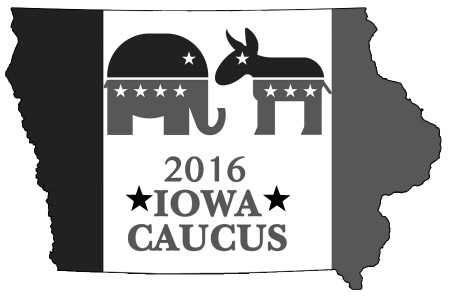JON SUNDBY, News Editor
sundbyjo17@grinnell.edu
One can easily tell by the Dining Hall conversations, posters fluttering around campus and the seemingly endless media coverage that it’s election season here at Grinnell College. While the madness will most likely continue until next November, coming up soon is the Iowa Democratic and Republican Caucuses, which the nation has eagerly been watching for a hint of who the next Commander-in-Chief may be. Due to all the attention surrounding this State’s caucuses, the Rosenfield program decided to host a series of talks and workshops focusing on the event. As part of this series, Barbara Trish, Political Science, and Sarah Purcell, History, hosted a talk on Tuesday, Dec. 1, entitled “What are the Iowa Caucuses?” in order to educate the student body on the history and importance of the process.
Trish began the presentation by looking at the history of the party nomination process. Having only begun in 1972, the caucus system emerged from reforms caused by a contested and violent Democratic Convention four years earlier in Chicago. During the 1968 election, Vice President Hubert Humphrey was nominated despite not winning any primary elections in the States, sparking a backlash by many young party activists. Because of this experience, the Democrats have worked to design a fair nomination process.
“The Republican Party is much less rule-oriented than the Democratic Party, not just in Iowa but nationally as well,” explained Trish, adding “the Democratic Party became very concerned with their own process after 1968, so many of the rules were in the spirit of making it more transparent and more open.”
After the reforms, Iowa took its place as the first state in the nation to decide upon an elected leader. This electoral event has brought so much prestige, as well as campaign money, into the state that local legislators recently wrote into the law that no matter what date other state’s place their primaries on, Iowa must place theirs a week ahead.
“If another state leapfrogs earlier, then Iowa has to move theirs up, which actually has created a little bit of an anxiety in the past few years. For instance in the 2012 caucus … the day of the caucus was Jan. 3 … so it’s a little bit of a bind for Iowa,” Trish said.
Purcell also explained that in terms of student participation, an earlier caucus date could affect the outcome simply because it fell on winter break.
“Actually the College opened up, students could get sleeping bags and camp out in the field house to go to the caucus. We have been better prepared this year for student participation because of the February date. It helps us to be back in session,” Purcell said.
Although Hillary Clinton is currently a clear frontrunner in Iowa, the campaign at Grinnell has been more contested. Posters for Martin O’Malley and signs for Bernie Sanders are now ubiquitous sights on campus and supporters of each candidate have been busy organizing throughout the semester. Even though these candidates are considered long shots for the national election, Trish finds them to be credible threats to win Ward One, the electoral sector that Grinnell College resides within.
“Grinnell Ward 1 has a history of supporting candidates who do not necessarily carry the state,” wrote Trish in an email to The S&B, adding, “In 2000, for example, Bill Bradley carried the Ward 1 caucus by a hefty margin, much to the pleasure of his supporters, who walked out of the caucus only to find that Gore had won the state handily (and the country too.)”
Next Monday, Dec. 7, the Rosenfield Program will conclude by hosting a panel of journalists to talk about the role of the media in the Iowa caucuses. Trish and Purcell hoped that the program had been enlightening to students and that they would be encouraged to participate and observe the often interesting political process.





























































